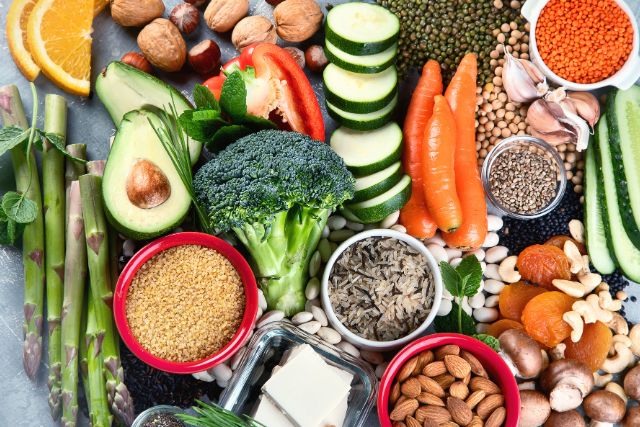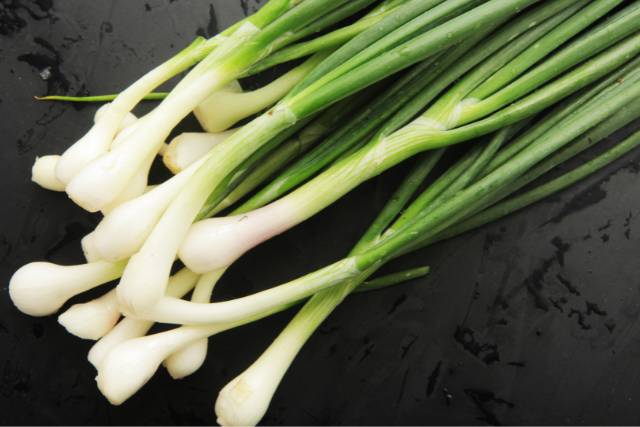Recent Posts
-

- Diabetes-Friendly Nutrition: Smart... 08.12.2024
-

- Nutrition for Chronic... 08.12.2024
-

- Anti-Inflammatory Diet: Food... 08.12.2024
-

- Low-Sodium and Heart-Healthy:... 08.12.2024
-

- Plant-Based Diets for... 08.12.2024
Organic Spring Onion 101: Everything You Need to Know

If you may ask yourself, what’s even the difference between the regular Spring Onion and its organic one? It has the same taste and appearance, so what do I need to know more regarding this particular type of vegetable? Trust us as we explore and read more about Organic Spring Onions and what is its benefit to people.
An onion plant of the Amaryllidaceae family, spring onions are classified as Allium cepa. The term spring onion is a general descriptor used to describe many different varieties of storage onions or bulb onions that are harvested before the bulb has had a chance to swell and mature to a large size.
A spring onion's appearance is characterized by a straight, layered stalk of overlapping leaves and a small round to oval bulb attached to a straight stalk. A cluster of fresh, flexible, and fine tan roots may also attach to the bulb's base. They are smooth, firm, crisp, and succulent, and can be found in bright white to red hues. These slender, tubular leaves are hollow and stiff. On the edges, they are dark green, but near the bulb, they lighten to a pale green color.
Spring onions have a mild and mellow taste and flavor, which is due to the presence of sugars in the bulbs, and are not present in more mature bulbs, which causes the taste to be sweet and mellow. The leaves have a strong, herbaceous, spicy, and grassy taste.
As one of the first vegetables of spring, it provides bright, fresh flavors and can be harvested 2 to 3 months after planting. Also, the white parts near the roots have the most pungent "oniony" flavor and add the most fragrance to your recipe. The white parts near the roots are also entirely edible, including the leaves and bulb. You can use the green leafy parts of the green onion to add texture and flavor to your dish.
Green onions should be rinsed under tap water to remove dirt and soil. Discard the rubber band and any wilted outer leaves. These can be composted or frozen for use in vegetable stock.
Because Spring Onion is most used as a garnish for dishes because of its strong aroma, there are also different ways you can cut this vegetable based on the dish you are making.
- Whole: Whole green onions are great for grilling or making scallion oil.
- Cut into thirds: This is common for braising and roasting where the green onion is not the focus of the dishes.
- Sliced lengthwise: Useful for steaming seafood like crabs or whole fish.
- Bias chopped: A beautiful shape that makes it ideal as a garnish on top of stews like jambalaya, fried rice, baked potato, and noodles.
- Chopped into “coins” horizontally: This is the most common, all-purpose cut for green onions and works well for baked potatoes, stir-fries, potato salads, omelets, sauces, wontons, as well as garnishing salads, pizzas, and tacos.
- Minced: Ideal for salad dressing or sauces.
- Blended: Ideal for making herb dips, bean dips and hummus, and sauces where you want the sauce to be very smooth.
In addition to Spring Onions being used in every dish you could think of, it also provides health benefits.
Cancer Risk Reduction
Sulfur is an essential mineral that is rich in green onions. It contains compounds like allyl sulfide and flavonoids that prevent cancer and combat the enzymes that cause cancer.
Reduces blood sugar levels
In addition to its anti-diabetic properties, the sulfur compounds found in spring onions also play a major role in this. They tend to increase the body's ability to produce insulin.
Aids in digestion
In addition to being rich in fiber, spring onions are excellent for digestion, so they are always preferred as appetizers. You can eat them cooked or raw, and they will help you stay healthy and fit.
Keeps a good vision
As well as being rich in vitamin A, spring onions contain carotenoids, which help to keep the eyesight healthy and intact.
Flu and cold prevention
It has antibacterial and antiviral properties that make it an excellent remedy for fighting viruses and flu. It also helps reduce excess mucus and fights against the winter cold that often leaves you feeling miserable as a result of not being able to get enough sleep.
Disclaimer: The information provided in this article is for general information purposes only. All information in this article is sourced from other sites on the web, and we make no representation of any rights regarding the contents and information on the site. All rights belong to their original owner.
Sources:
- Spring Onions Information, Recipes, and Facts (specialtyproduce.com)
- The 101 guide on how to cut, cook, store green onions/scallions (garlicdelight.com)
- 5 Amazing Benefits Of Spring Onions We Bet You Dont Know - NDTV Food





